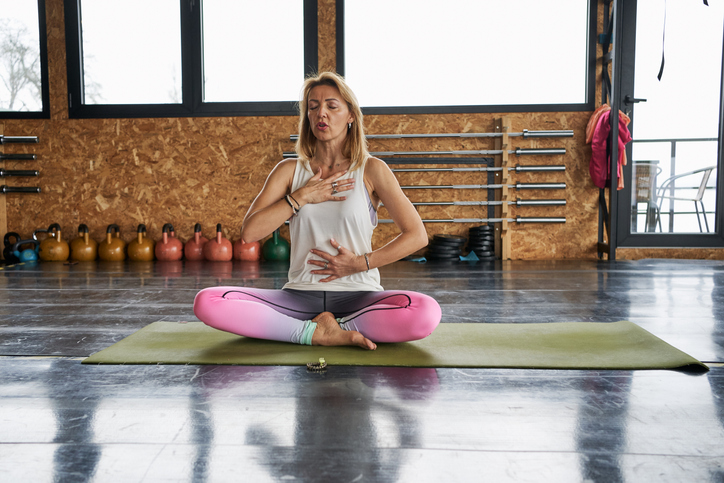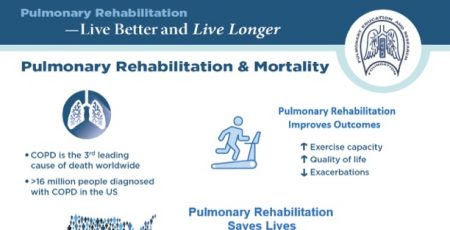
22 Apr Tackling Breathlessness with Yoga
Benefits of Yoga Breathing for COPD and Enhancing Lung Function
by Renee Love Idelicato, ND, and Jacqueline Tosolini, RCP
Most of us take breathing for granted. The process is mainly involuntary and occurs without us having to think about it. When it comes to our health, the quality of our breath matters. Despite that it is healthier to breathe through your nose, instead of your mouth, it is estimated that about 30-50% of adults breathe through their mouth. In yoga, we are reminded to pay attention to how we breathe. In this article, we’ll take a closer look at the advantages of the yoga technique of breathing through your nose, as well as simple nose breathing exercises you can try to use this technique during your everyday life.
One of the most amazing and healthful benefits to breathing through your nose is promoting the inhalation of the molecule nitric oxide. In 1998, three scientists were awarded the Nobel Prize for the discovery of nitric oxide, which causes vasodilation – opening of the blood vessels – and reduces blood pressure. Dr. Louis Ignarro was one of those scientists. Dr. Ignarro found that nitric oxide is produced by endothelial cells in the nose (the cells lining the inside of the nasal cavity). When breathing in through the nose (rather than the mouth), nitric oxide is released and inhaled deeply into the lungs. This helps to dilate the blood vessels inside the lungs and increases oxygen levels in the blood. Nitric oxide also can relax the smooth muscles in the lung’s airways, whose contraction can make breathing more difficult. Relaxing these airway smooth muscles allows for more oxygen to travel freely into the lungs. By practicing nose breathing vs. mouth breathing, you can increase the amount of nitric oxide that enters the lungs.
The controlled breathing techniques that we have learned as yoga teachers are very similar to the techniques taught to respiratory therapists. Controlled breathing techniques such as pursed-lip breathing and abdominal breathing are two ways to improve oxygenation and allow for more carbon dioxide to be exhaled.
Abdominal Breathing
Abdominal breathing, also called diaphragmatic breathing, activates the diaphragm – the dome-shaped muscle that sits under your lungs and above your digestive and internal organs. It involves taking slow, deep breaths in and out through your nose. The goal is to breathe deeply enough so that your diaphragm moves downward and distends your belly. This increases the amount of oxygen you take in and may help slow down your breathing and heart rate. Abdominal breathing also increases mindfulness and reduces stress. Here’s how to do it:
- Sit comfortably, with your knees bent and your shoulders, head, and neck relaxed.
- Place one hand on your upper chest and the other just below your rib cage. This will allow you to feel your diaphragm move as you breathe.
- Breathe in slowly through your nose so that your stomach moves out against your hand.
- Repeat for 5 to 10 minutes.
Pursed-Lip Breathing
The pursed-lip breathing technique is done by inhaling through your nose and slowly exhaling out of your mouth while your lips are pursed, much like your lips are around a straw and you’re breathing out through the straw. The exhalation should be three to four times longer than your inhalation. This length of time varies from person to person. Practice these steps:
- Sit up tall and relax your shoulders. You can also lie down on your bed.
- Close your mouth. Place one hand on your belly and one on your chest.
- Inhale slowly through your nose, letting your belly rise and fill with air. Your chest should stay still.
- Purse your lips and exhale slowly.
- Repeat for 5 to 10 minutes.
On the PERF website, you can find a video of PERF Board member, Dr. Brian Tiep, teaching a pulmonary patient the technique of purse-lipped breathing to increase blood oxygen levels.
We hope these techniques help you master nose breathing while enhancing your lung function and reducing stress.





Ken Dawson
Posted at 12:06h, 23 AprilVery useful and interesting information on Nitric oxide. I did not know those things. I also try to use Qigong and Tai Chi to help with my breathing. Seems to help.
Pedes Orange County
Posted at 02:02h, 28 AprilYoga definitely works and Breathing exercise is an important part of yoga. Thank you for sharing such a wonderful blog.
Robert Stephen
Posted at 07:15h, 08 MayThanks for sharing this information.
There are some conferences happening in which medical specialty would be “Oxygen Therapy” here is one of those conferences the conference details are given below.
Respiratory Therapists: Oxygen Therapy: What you need to know to get it right for your patients. This webinar discusses evaluation
and testing requirements for Long Term Oxygen Therapy (LTOT) treatment and guidelines.
For more information given below
https://www.emedevents.com/online-cme-courses/webcasts/oxygen-therapy-what-you-need-to-know-to-get-it-right-for-your-patients